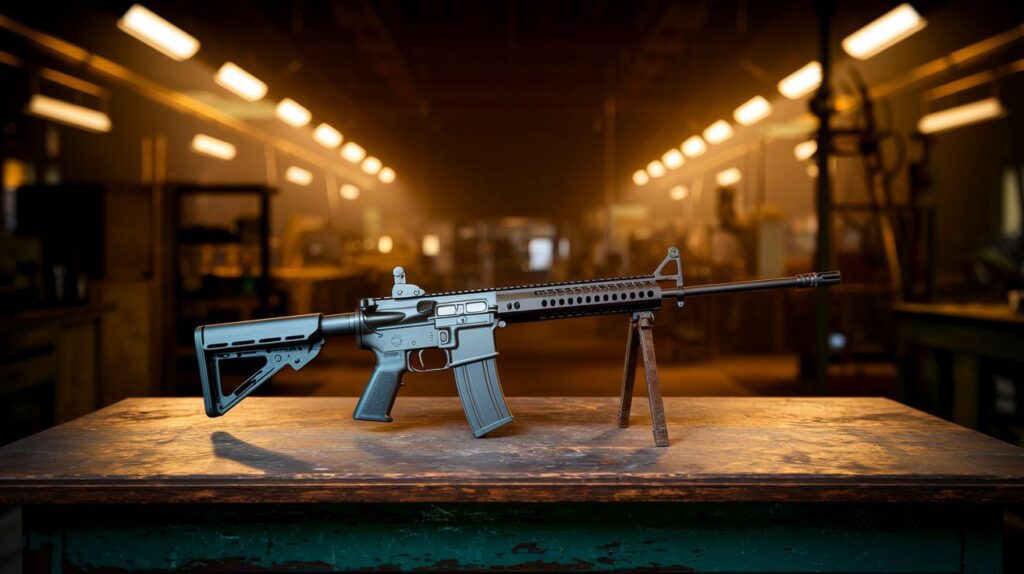The global Light Weapons Market is entering a period of sustained modernization as military forces adapt to rapidly changing threat environments. Valued at USD 13.4 billion in 2024, the market is set to reach USD 19.7 billion by 2035, growing at a CAGR of 3.7%. Rising defense expenditure, intensifying border-security challenges, and the evolving nature of urban and asymmetric combat are accelerating the shift toward lighter, smarter, and more precise weapon systems.

Download PDF Brochure @ https://www.marketsandmarkets.com/pdfdownloadNew.asp?id=224024553
Light weapons—including small arms, ATGWs, MANPADS, mortars, grenade launchers, and portable rocket systems—remain indispensable across modern warfare scenarios. Their portability, reliability, and increasingly advanced targeting and fire-control capabilities ensure they remain mission-critical for armed forces, special operations units, and homeland security missions worldwide.
Market Outlook: From Traditional Firepower to Smart, Connected Systems
The global security landscape is witnessing heightened investment in infantry modernization programs. Nations across NATO, Asia, and the Middle East are transitioning from legacy shoulder-fired systems toward modular, precision-guided, and digitally enhanced weapon platforms.
Key Market Momentum Factors
- Rising defense budgets across major economies
- Increased procurement driven by ongoing conflicts in Eastern Europe
- Growing demand for guided systems to reduce collateral damage
- Border-security pressures, particularly in the Middle East, South Asia & Africa
- Upgradation of infantry loadouts with lightweight, multi-role systems
Major soldier modernization projects—including the U.S. NGSW program and India’s Make-in-India defense initiatives—are reshaping global procurement cycles.
Modernization Trends Transforming the Market
1. Precision-Guided & Fire-and-Forget Weapons
Infantry forces increasingly prefer next-generation ATGWs and MANPADS featuring:
- AI-supported targeting
- Thermal and EO/IR seekers
- Real-time guidance feedback
- Reduced weight and recoil
These systems enhance strike accuracy while reducing operator exposure.
2. Electro-Optical Fire-Control & Smart Sights
The shift from traditional optics to augmented reality (AR) aiming devices is expanding aftermarket opportunities, enabling:
- Rapid target acquisition
- Improved low-light and long-range accuracy
- Integrated ballistic calculation
3. Lightweight Materials & Ergonomic Design
Composite frames, 3D-printed components, and modular architectures are now standard in weapon development, significantly improving mobility in urban operations.
4. Sustainability-Driven Ammunition Innovation
Lower-toxicity primer compounds, lead-free rounds, and eco-friendly propellant technologies are becoming increasingly common as nations push for greener defense manufacturing.
5. Training Transformation
Digital simulation platforms and virtual firing ranges are reducing ammunition expenses and enabling safe, scalable, year-round training.
Segmentation Highlights
Small Arms – The Backbone of Modern Forces
The largest segment, supported by:
- Regular replacement cycles
- Troop expansion initiatives
- Mandates for standardized assault rifles & carbines
Anti-Tank Weapons – Fastest-Growing Segment
The need to defeat modern armored threats is fueling demand for:
- Lightweight ATGMs
- Fire-and-forget seeker technology
- Top-attack capability
Guided vs. Unguided Systems
Guided systems dominate procurement due to improved precision and operator safety, while unguided variants remain relevant for low-cost and low-intensity missions.
Deployment Platforms
- Land forces lead adoption
- Airborne & naval forces gradually integrate lighter missile and rocket systems
- Homeland security agencies deploy adaptable systems for border and counter-insurgency operations
Regional Insights
North America – The Largest Market
Driven by:
- The NGSW program
- Lightweight weapon modernization
- Evolving SOCOM requirements
Europe – Fueled by NATO Rearmament
Strong demand for:
- ATGWs
- MANPADS
- Small arms replacement programs
Particularly accelerated by the Russia–Ukraine conflict.
Asia Pacific – Fastest-Growing Region
High procurement activity across:
- India
- China
- Japan
- South Korea
Boosted by joint manufacturing, defense indigenization, and border modernization.
Middle East & Africa
Focus on infantry mobility, counter-terrorism, and counter-UAS weapon solutions.
Latin America
Stable demand led by Brazil’s domestic industry and regional counter-narcotics missions.
Competitive Landscape: Innovation & Collaboration Lead the Way
The market is shaped by global defense giants and specialized indigenous manufacturers focused on modularity, precision, and lightweight design.
Key players include:
Lockheed Martin, Thales Group, FN Herstal, BAE Systems, Rheinmetall AG, Raytheon Technologies, Saab AB, Heckler & Koch, Nammo AS, and Israel Weapon Industries.
Strategic Growth Themes
- Modular weapon platforms
- Digital fire-control integration
- Lightweight composite structures
- Co-development & technology transfer
- Domestic manufacturing partnerships
These strategies help countries reduce import dependency and strengthen national defense ecosystems.
Ask for Sample Report @ https://www.marketsandmarkets.com/requestsampleNew.asp?id=224024553
Future Outlook: Toward AI-Enabled Infantry Combat
By 2035, light weapons will evolve from standalone firepower tools into digitally connected battlefield assets. Integrated sensors, advanced optics, AI-enabled targeting, and cross-platform interoperability will shape the next era of soldier lethality.
